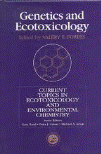Papers in the Biological Sciences
Date of this Version
2002
Citation
Published in Philosophical Transactions of the Royal Society, London, B: Biological Sciences 357 (2002), pp. 1299–1306; doi: 10.1098/rstb.2002.1129
Abstract
Assessing the ecological risks of toxic chemicals is most often based on individual-level responses such as survival, reproduction or growth. Such an approach raises the following questions with regard to translating these measured effects into likely impacts on natural populations. (i) To what extent do individual-level variables underestimate or overestimate population-level responses? (ii) How do toxicant-caused changes in individual-level variables translate into changes in population dynamics for species with different life cycles? (iii) To what extent are these relationships complicated by population-density effects? These issues go to the heart of the ecological relevance of ecotoxicology and we have addressed them using the population growth rate as an integrating concept. Our analysis indicates that although the most sensitive individual-level variables are likely to be equally or more sensitive to increasing concentrations of toxic chemicals than population growth rate, they are dif. cult to identify a priori and, even if they could be identified, integrating impacts on key life-cycle variables via population growth rate analysis is nevertheless a more robust approach for assessing the ecological risks of chemicals. Populations living under density-dependent control may respond differently to toxic chemicals than exponentially growing populations, and greater care needs to be given to incorporating realistic density conditions (either experimentally or by simulation) into ecotoxicological test designs. It is impractical to expect full life-table studies, which record changes in survival, fecundity and development at defined intervals through the life cycle of organisms under specified conditions, for all relevant species, so we argue that population growth rate analysis should be used to provide guidance for a more pragmatic and ecologically sound approach to ecological risk assessment.


Comments
Copyright © 2002 The Royal Society. Used by permission.